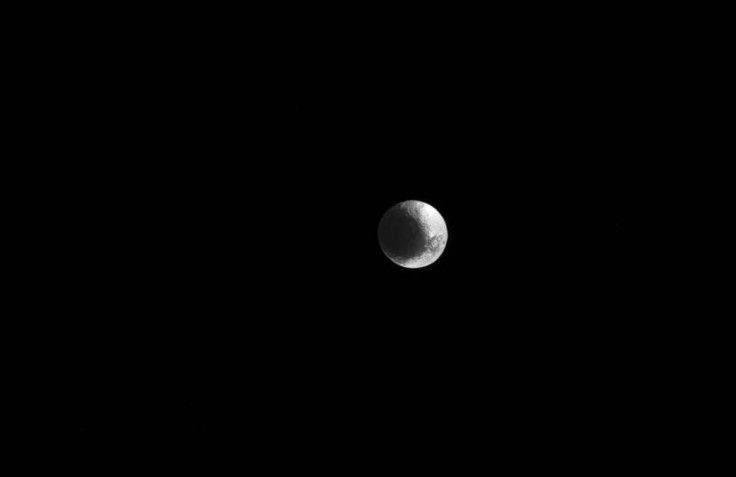Cassini's new image of Saturn's lesser-known moon Iapetus shows a world of contrast
The image shows a view of Saturn-facing hemisphere of Iapetus.

Nasa has released new image of lapetus, Saturn's third largest moon. The never-seen before image, captured by Cassini, highlights the moon's world of contrast, with light and dark regions fitting together like cosmic puzzle pieces.
Lapetus' image shows a view of the Saturn-facing hemisphere of the moon. The photograph was taken in visible light with Cassini's spacecraft narrow-angle camera on 11 March from a distance of approximately 2.6 million km.
The left portion on the moon can be seen covered in a layer of dark, dusty material known as the Cassini Regio, creating a stark contrast to the much brighter region that surrounds it. This leads to the moon's distinctive and dramatic two-toned coloured appearance.
Prior to this, Cassini has observed several other features of the moon, including its massive equatorial ridge running three-quarters of the way around the moon. Unlike most moons its overall shape is neither spherical nor ellipsoid, but has a bulging waistline and squashed poles.
Cassini is a cooperative project of NASA, ESA (the European Space Agency) and the Italian Space Agency and is scheduled to be decommissioned this year sometime in September when it will plunge into the inner rings of Saturn. It is currently on its final mission to observe and navigate Saturn's rings and explore space territory never assessed before.
© Copyright IBTimes 2025. All rights reserved.





















